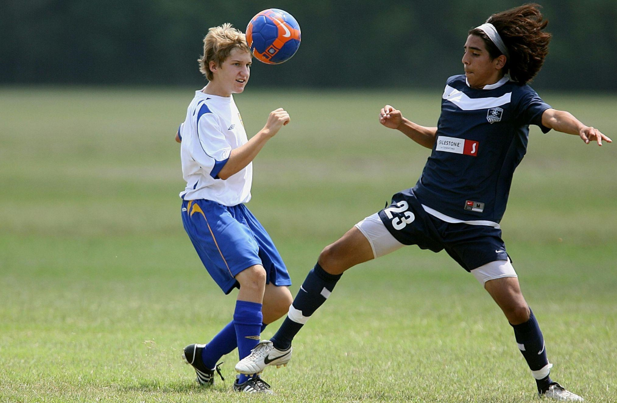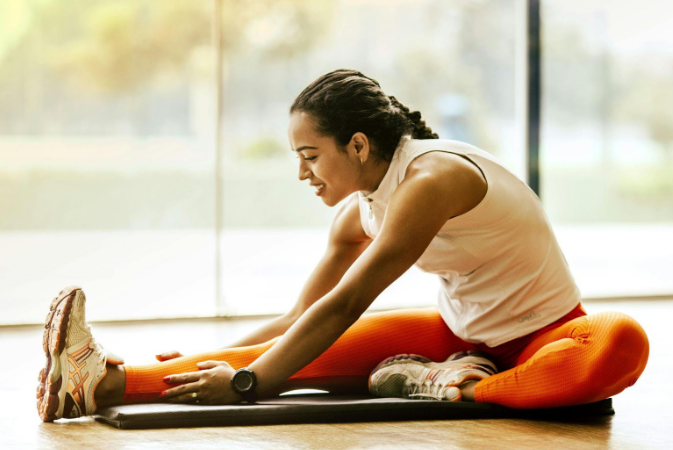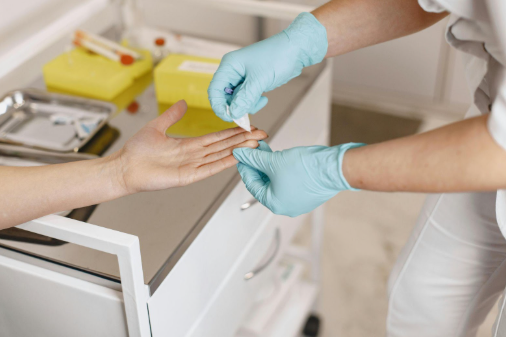Spring into Action: A Guide to Injury Prevention and Wellness for Young Athletes
Spring into Action: A Guide to Injury Prevention and Wellness for Young Athletes

Spring often marks the beginning of a new sports season for young athletes, filled with excitement, competition, and the opportunity to learn and grow. However, with increased activity comes the potential for injuries. By prioritizing injury prevention and overall well-being, you can confidently enter the season, reach your full potential, and enjoy the experience to the fullest.
This guide helps young athletes navigate the season safely and healthily. Read on to learn more.
Injury Prevention for Young Athletes
Because you’re still young, you’re still developing, and your body is more susceptible to injuries than adults. Injuries can not only cause physical pain and emotional distress but can also hinder your development, impact your confidence, and potentially sideline you from the activities you love. By prioritizing injury prevention, you can minimize these risks and create a foundation for a lifelong love of physical activity. Here are a few ways to do so:
Proper Warm-up and Cool-down
Before engaging in any strenuous activity, you must prepare your body for it. A dynamic warm-up involves movements that gradually increase your heart rate and blood flow. Think of it as a gentle awakening for your muscles. Incorporate dynamic stretches such as lunges, arm circles, and leg swings. This reduces the risk of strains and tears and enhances flexibility.
On the flip side, the cool-down phase is just as important. After your workout, try to spend 5-10 minutes on static stretches. Hold each stretch for about 30 seconds, focusing on key muscle groups like the hamstrings, quads, and chest. This helps improve flexibility and minimizes muscle soreness.
Strength Training and Conditioning
Stronger muscles and greater endurance act as a shield against overuse injuries. Tailor your training programs to your specific sport and age group. Start with lighter weights, focusing on proper form and technique. Once that has been formed, you can gradually increase the intensity and duration of your workouts. This gradual approach ensures your body adapts, reducing the risk of potential injuries.
Proper Equipment and Safety Gear
Your protective gear is like your personal bodyguard. Whether it's helmets, pads, or mouth guards, ensure they are designed for your specific sport. Well-fitted and maintained gear significantly reduces the risk of serious injuries in falls or collisions. Regularly check and replace worn-out pieces to maintain their effectiveness in protecting you.
Listening to Your Body
Your body communicates with you; listen attentively. Fatigue, pain, or discomfort are signals that your body needs attention. Ignoring these signs and pushing through can lead to more severe injuries. Taking a break, resting, or seeking medical advice when needed is a proactive approach to injury prevention.
Proper Technique and Training
Mastering proper technique is similar to mastering the art of your chosen activity. Seek guidance from qualified coaches or trainers who can provide personalized instruction. This optimizes your performance and ensures that you execute movements with precision, minimizing the risk of injuries caused by repetitive stress or improper form.
Sportsmanship and Communication
Creating a positive and respectful environment is the foundation of injury prevention. Encourage fair play, respect for teammates and opponents, and open communication with coaches and parents. Promptly addressing concerns regarding pain, fatigue, or potential safety hazards ensures a safer and more enjoyable fitness journey for everyone involved.
Wellness for Young Athletes
As enthusiasm for the upcoming season builds, prioritizing well-being becomes integral to maximizing performance, preventing injuries, and ensuring a healthy and enjoyable athletic journey. Here are some quick ways to achieve holistic wellness:
Nutrition
Athletes of a younger age have unique nutritional needs due to their growing bodies and increased physical activity. A balanced diet of fruits, vegetables, whole grains, lean protein, and healthy fats provides the necessary energy and nutrients for optimal performance and recovery. Consulting a registered dietitian or sports nutritionist can help create a personalized meal plan that aligns with your specific sport, training intensity, and individual needs.
Hydration
Proper hydration is important for regulating body temperature, transporting nutrients, and lubricating joints. You are susceptible to dehydration due to increased sweating during exercise. Try to carry reusable water bottles and take frequent sips throughout the day, especially during training sessions.
Supplements
While a balanced diet should provide the most essential nutrients, consulting a healthcare professional about appropriate supplements may be necessary in some cases. However, it is important to remember that supplements are not a substitute for a healthy diet and should only be used under the guidance of a qualified professional.
Mental Wellbeing
Being a young athlete means facing challenges both on and off the field. Stress, anxiety, and performance pressure are all normal. Remember, you're not alone! Open communication with coaches, parents, or teammates is integral. You can also seek professional help, and they will teach you valuable tools like mindfulness and relaxation techniques. These resources will equip you to navigate emotional challenges and build a strong, positive mindset. Learning from mistakes, celebrating progress, and fostering resilience are the hallmarks of a successful athlete.
Time Management
Balancing school, sports, and your personal life can feel overwhelming. Luckily, time management can help. By learning to prioritize tasks and manage your schedule efficiently, you'll have more time for everything and less stress to weigh you down.
Building a Strong Foundation
The journey to becoming a great athlete starts with a solid foundation:
- Sleep: Adequate sleep is essential for physical and mental recovery, allowing the body to repair tissues, consolidate memories, and optimize cognitive function. Someone of your age typically requires 8-10 hours of sleep per night. Establishing a consistent sleep schedule, creating a relaxing bedtime routine, and avoiding screens before sleep can all contribute to improving sleep quality.
- Strength Training: Building strength and muscle mass enhances performance, improves stability, and reduces the risk of injuries. Age-appropriate strength training programs with proper guidance should be incorporated into your routine, focusing on exercises that promote proper form and technique.
- Rest and Recovery: Including rest days in your training schedule allows your body to recover and rebuild. Overtraining can cause fatigue, decreased performance, and an increased risk of injuries. You must listen to your body, take rest days when needed, and schedule active recovery activities like yoga or light walks.
Building a Support System
Success in sports isn't just about individual talent. Let’s explore three key pillars of a strong support system:
Communication
You must have open and honest communication with coaches, parents, and healthcare professionals. This allows for early identification of concerns and adjustments to training plans, thus creating a supportive environment.
Parental Support
Parents play an integral role in fostering a healthy and positive athletic experience for their children. Providing encouragement, ensuring access to proper resources, and respecting their child's individual needs are crucial aspects of parental support.
Teamwork and Sportsmanship
Participating in sports fosters teamwork and sportsmanship skills. You must support your teammates, celebrate successes, and learn from losses. This creates a positive team environment and contributes to overall athletic development.
Do you want to dominate the competition and feel your best?
Bayou Bend Health System is your one-stop shop for athletic success. Within our
Wellness Center, athletes as young as 13* can train like champions in our state-of-the-art
fitness center and receive expert guidance from our fitness professionals. The Wellness Center also houses
Orthopedic Services and Outpatient Therapies to help diagnose and heal any sport-related injuries. We help young athletes reach their full potential, on and off the field.
Visit us today and unleash your inner champion!
*Children ages 13-15 must be a member of the Bayou Bend Fitness Center and must be accompanied by a member who is 18-years-old or older.



